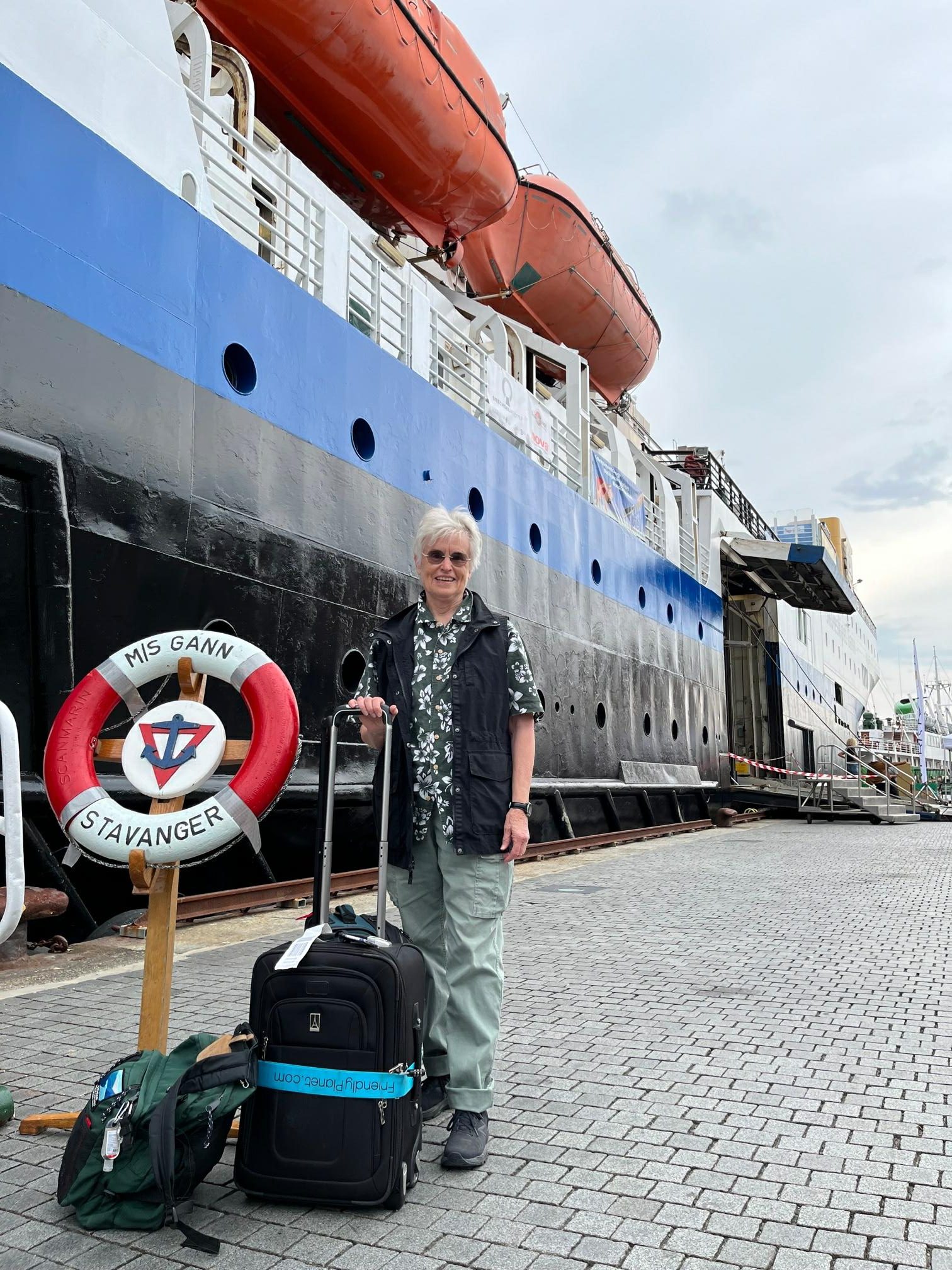
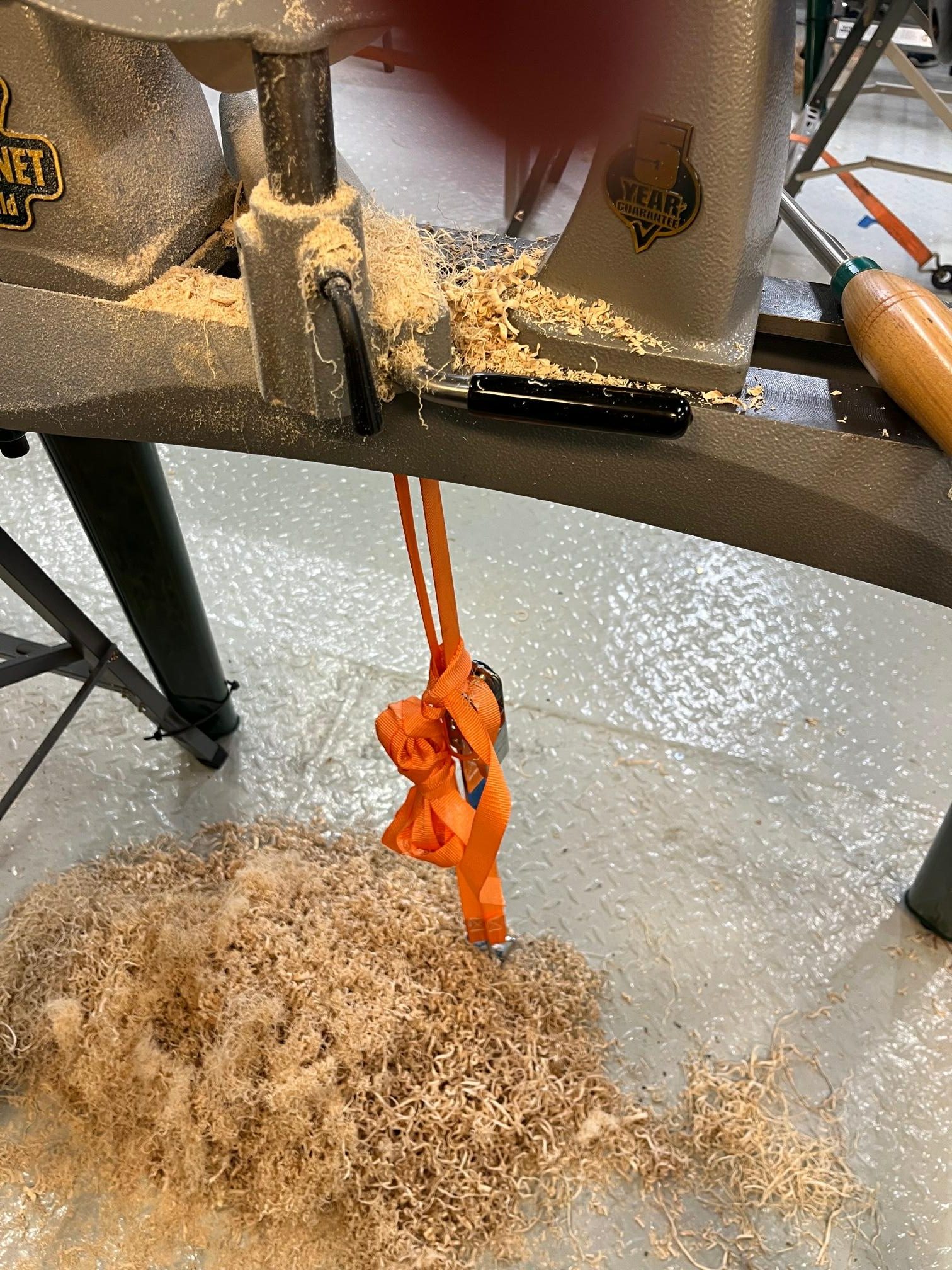



Imagine lifting up an entire Woodcraft store and dropping it into a big ship. Then imagine an AWW symposium with top notch turning instructors and a dozen lathes moved into this ship. Add a dozen skilled demonstrators who happily answer your questions. Then onboard about 150 people who love the same hobby you do (woodturning) and throw in a few other makers of unique things, like hats, knives, wood carving, or wire wrapping. Obviously since you live on this ship and have 3 meals a day served, there is no commute so you can carve out a few minutes of top deck time and watch the beautiful islands, fjords, and coastline of Norway float slowly by.
Now that you’ve imagined all this, you can understand why the Norwegian Woodturning Cruise belongs at the top of your bucket list. It only happens once every 3 years, so you’ve got time to plan!
I’ll share some journal entries here to explain how this amazing endeavor works and why it is so beloved (for many of my fellow travelers this is their 4th time on the trip).
#1 – Arrival at the Stavanger harbor to board the MS Gann, a “school ship” for 10 months a year. Stavanger is a southern coastal city about an hour flight from Oslo.
#2 – The route takes 12 days from Stavanger to the Arctic Circle and back.
#3 – The water is very placid ( don’t worry about motion sickness) but even so the machines and wood supply are fastened to the decks.
#4 – Every day you have the option of working with an instructor on your own lathe (shown here Colwin Way from Britain), or
#5 – Watching a demonstration by a world-class turner ( shown here Eli Avisera from Israel).
TO BE CONTINUED




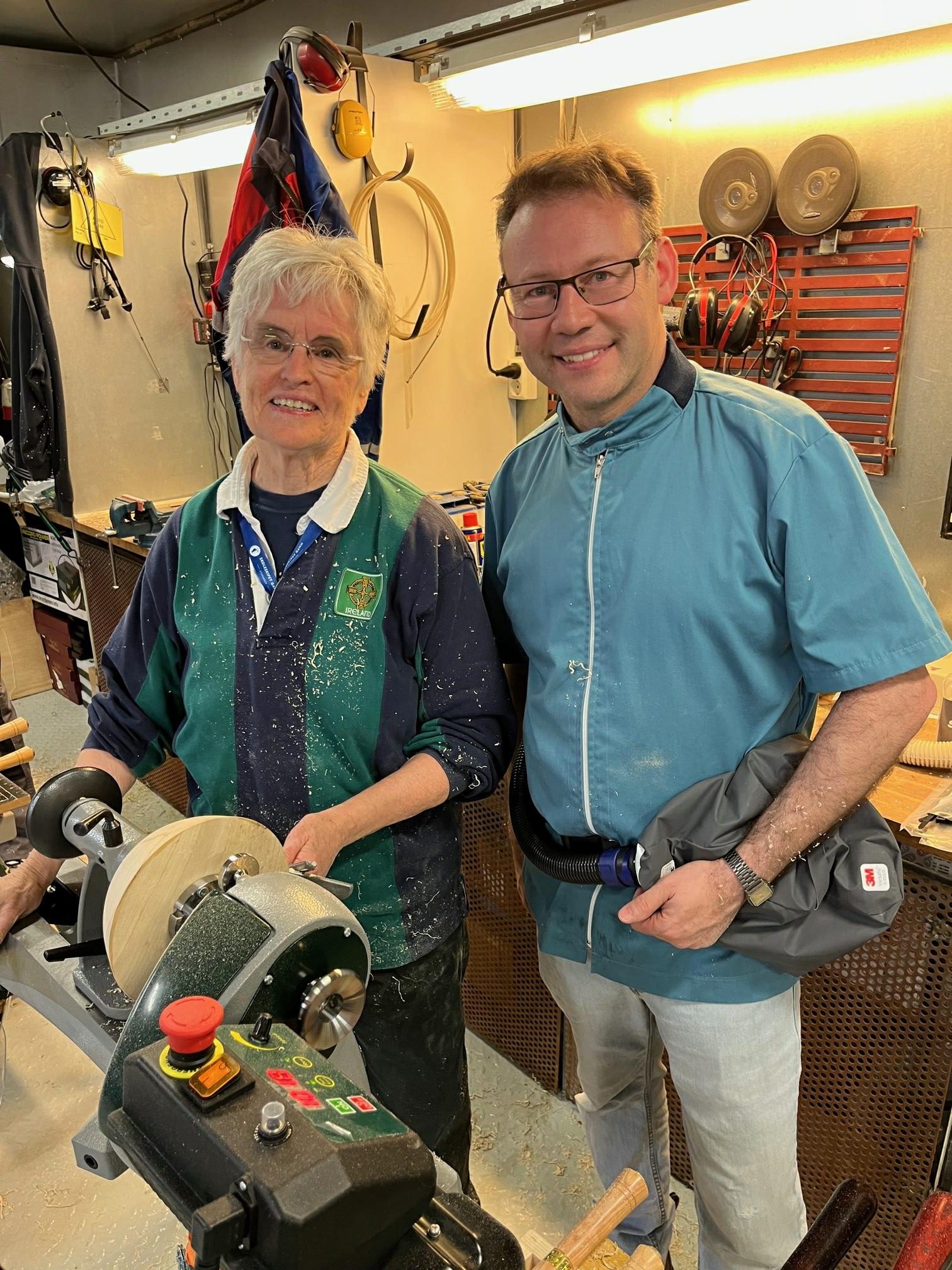
The inside of the Arctic Circle is much like the outside, apart from strange creatures who danced around the deck and threw chocolate sauce and cold water on the land lubbers. The ritual was a hilarious sidebar to the serious tool buying and shave making below the sundeck.
#1 – King Neptune (aka Nick Agar) arrived with mermaids and accordion music to lead the initiation.
#2, #3, #4 – Turning opportunities for us passengers take place in two locations while we are docked in a port, and a third when we are travelling. On the sundeck we enjoy a breeze and the magnificent views. There is surprisingly little roll, but it does require placing your feet in a good bracing position.
#5 – Inside the ship is a classroom with 7 lathes, complete equipment, and 2 instructors. We sign up for a 2-hour block of time and can work on anything we want with the instructors on hand to help.
There are about 200 turners (including several spouses) on board, plus about 50 crew who take care of every need. Most of them are volunteers who are doing a working “vacation,” one day on, one day off, with opportunities to see more of Norway.
TO BE CONTINUED



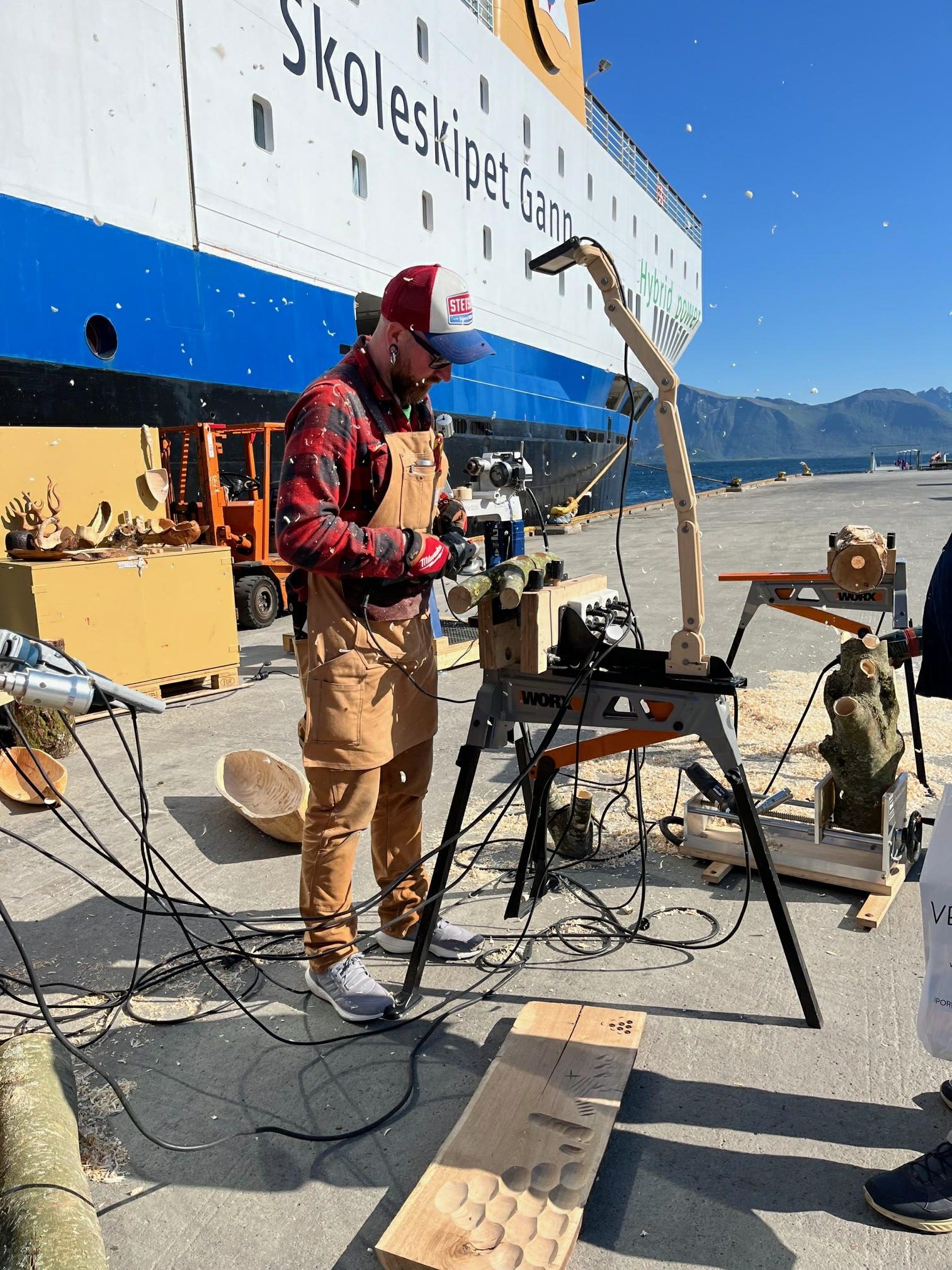



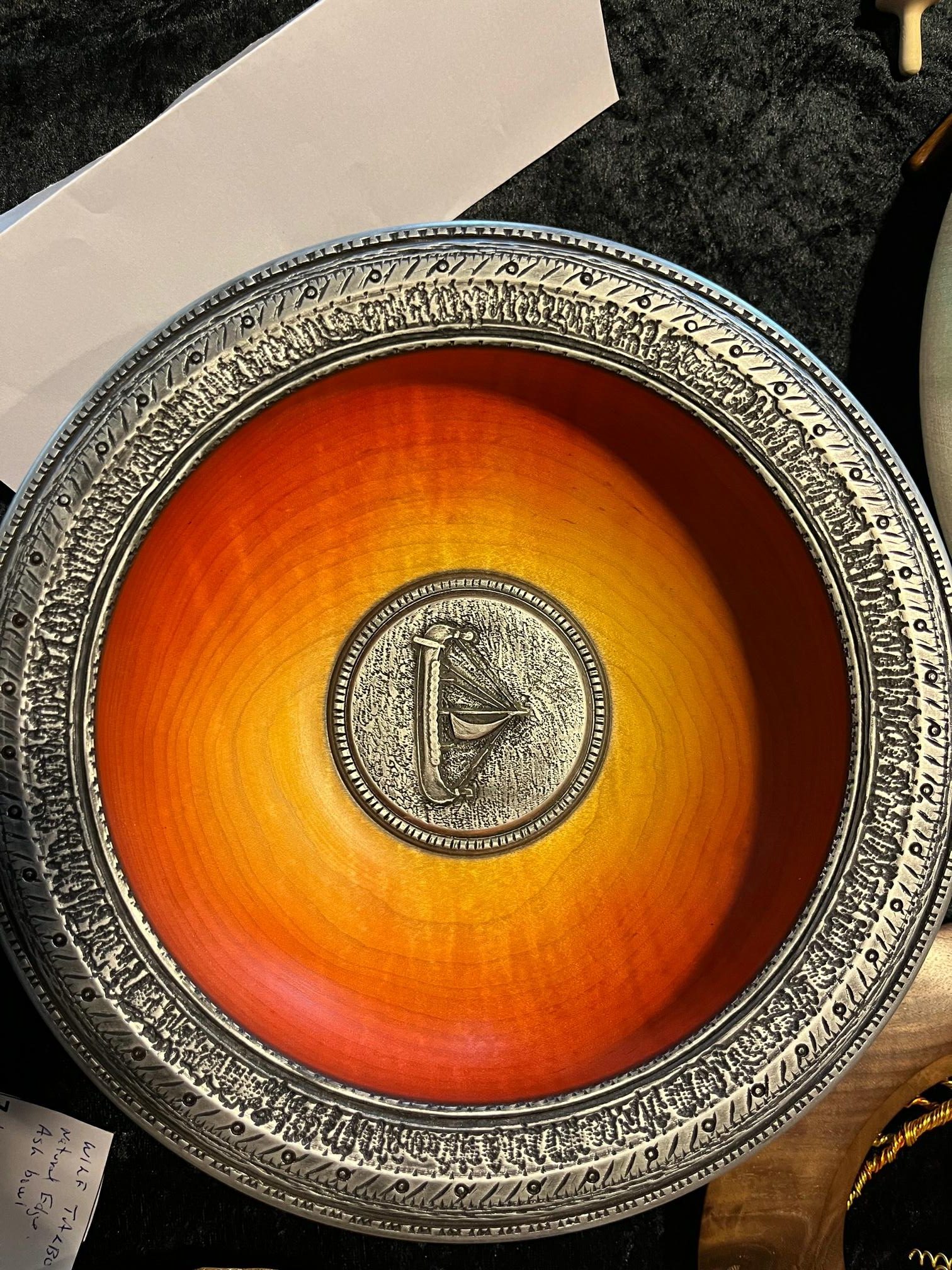
Down in the basement classroom and up on the demo sundeck, the Sorby Ring Tool is king this year. Many are trying it out for the first time and others are adding new uses for it. The most common application is end grain hollowing on green wood. It’s way ahead of scrapers and gouges in that usage because it slices without a heel rubbing.
The original reason for sending this ship up the coast of Norway was to bring equipment and supplies to turners who are far from stores and would have to pay exorbitant shipping fees for items they hadn’t seen. So for the past 25 years locals have been invited on board to shop and learn from a dozen or so demonstrators. It’s a fascinating operation to watch: the gangway goes down, hysters carry machines out onto the dock, and swarms of locals gather around to watch, or grab a shopping basket and come on board to buy from a massive selection of tools and accessories.
In between these daily stops, the passengers keep the demonstrators busy with questions and one-on-one tutoring. It’s a bit of a hodge podge and takes a couple days to catch on to but it seems to work. The designated blocks of instructional time require advance sign-up and a bit of luck to get who or what you want. I was happy to have Colwin Way and Glenn Lucas a couple times and Nick Agar was everywhere with his Viking bowl demos.
All of this in the environment of fjell and fjords, midnight sun, and off-ship excursions. I may have been a wee bit optimistic in an earlier Email when I thought the the ship was steady through the waves. We have had a couple days of mild rolling and tilting that caused the instructors to adjust their stance at the lathe. It’s a weird feeling to be cutting downward on the grain while the ship is sending it upward. But it was temporary.
The final chapter
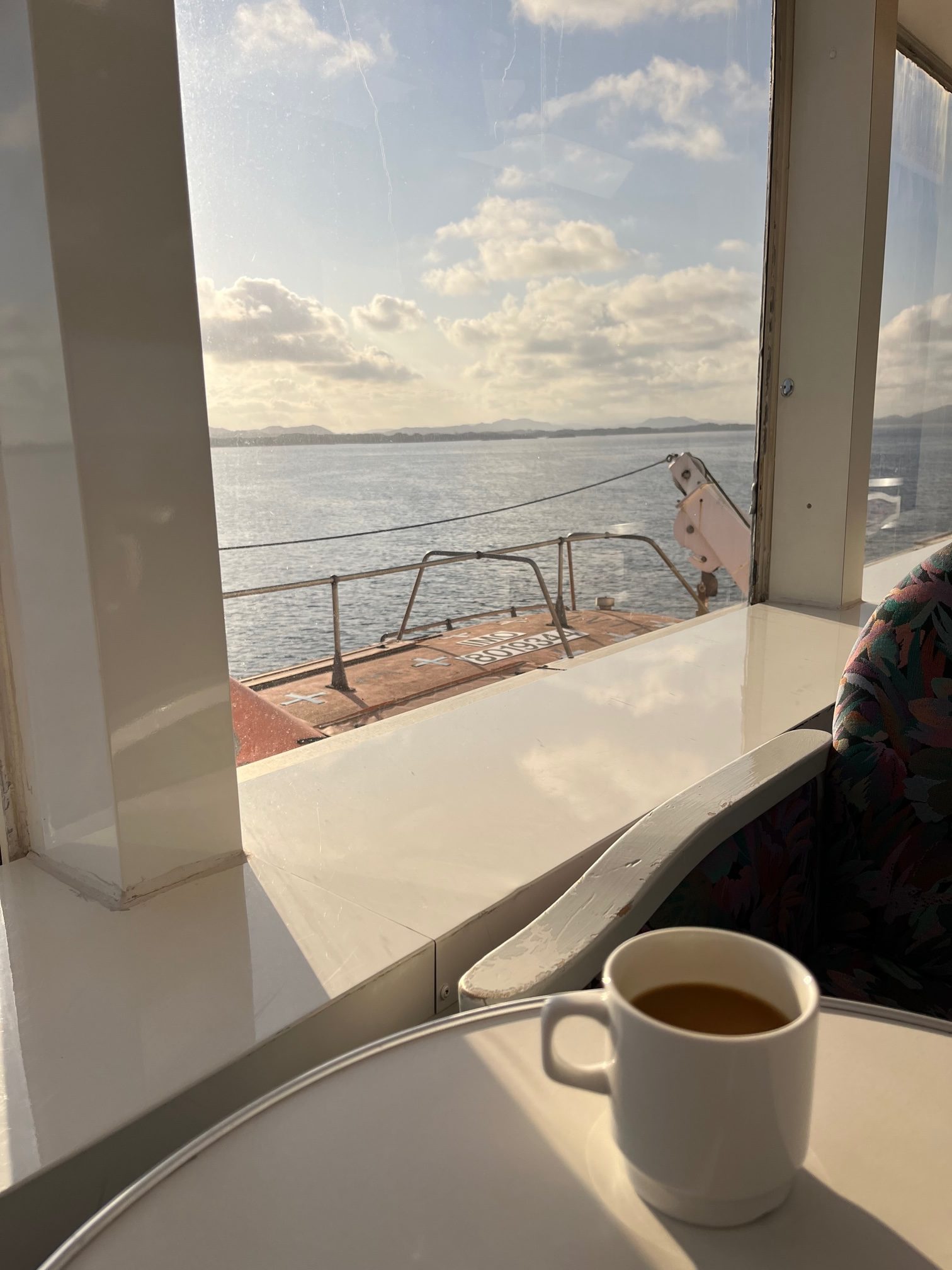

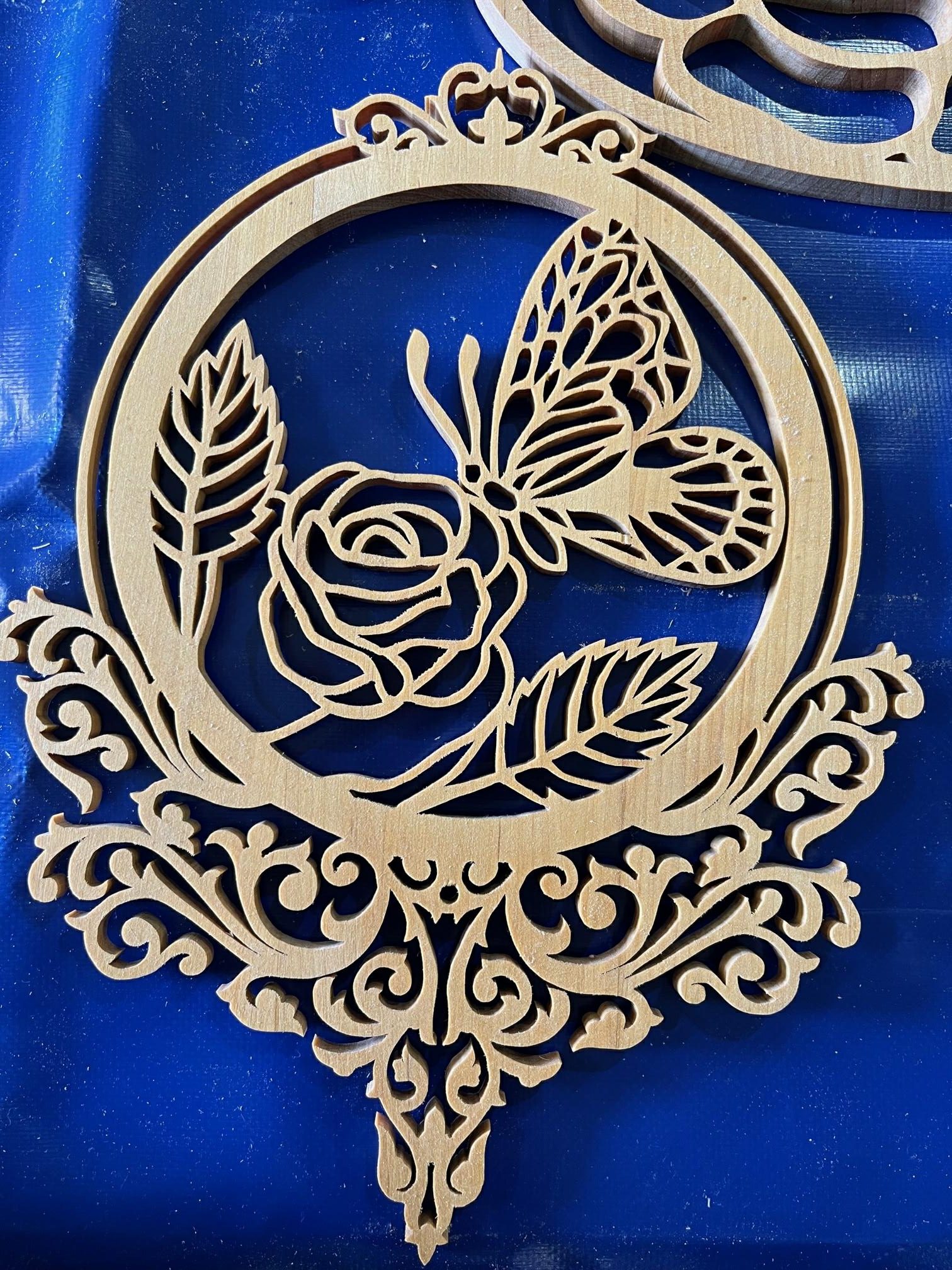

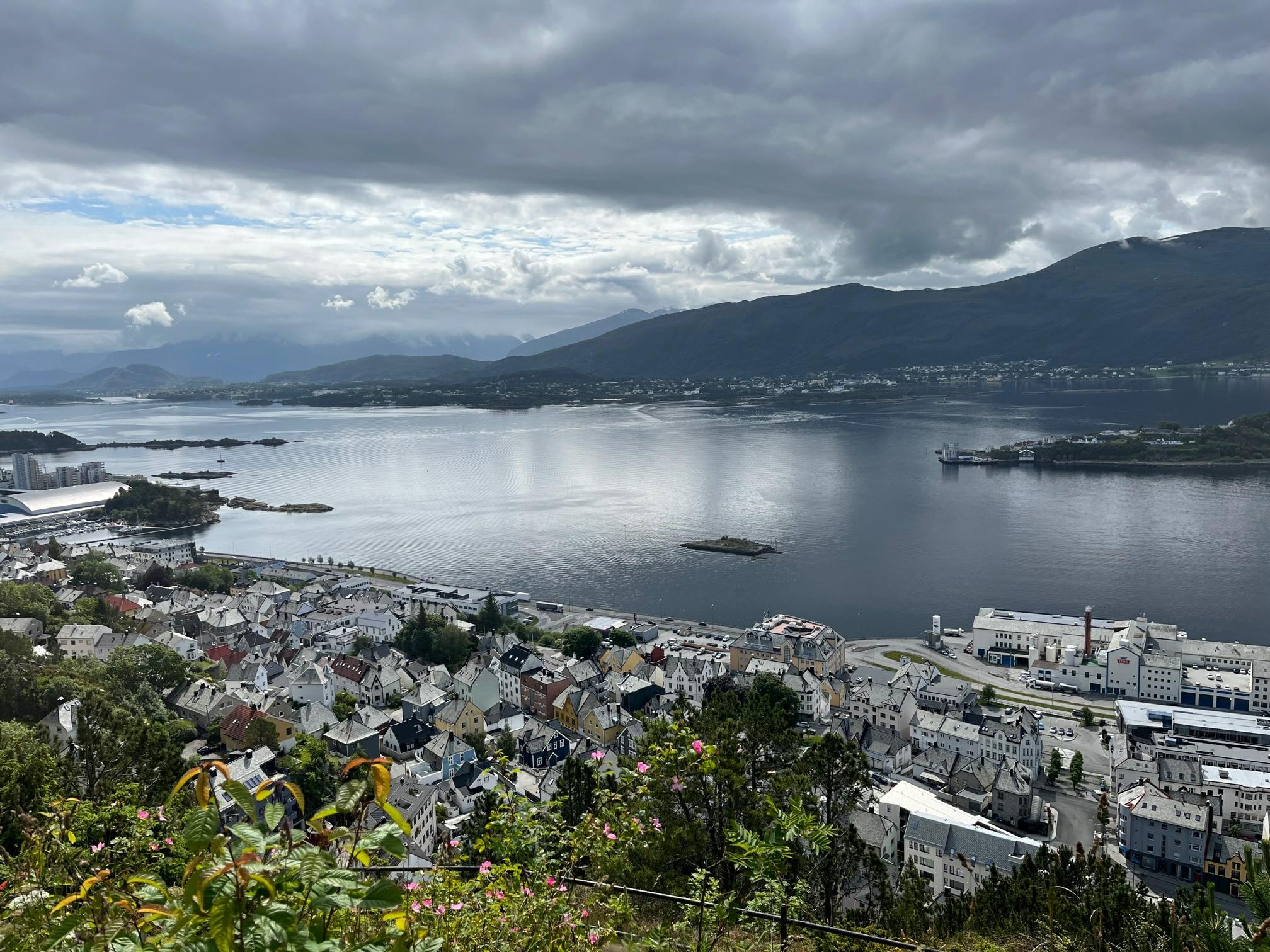
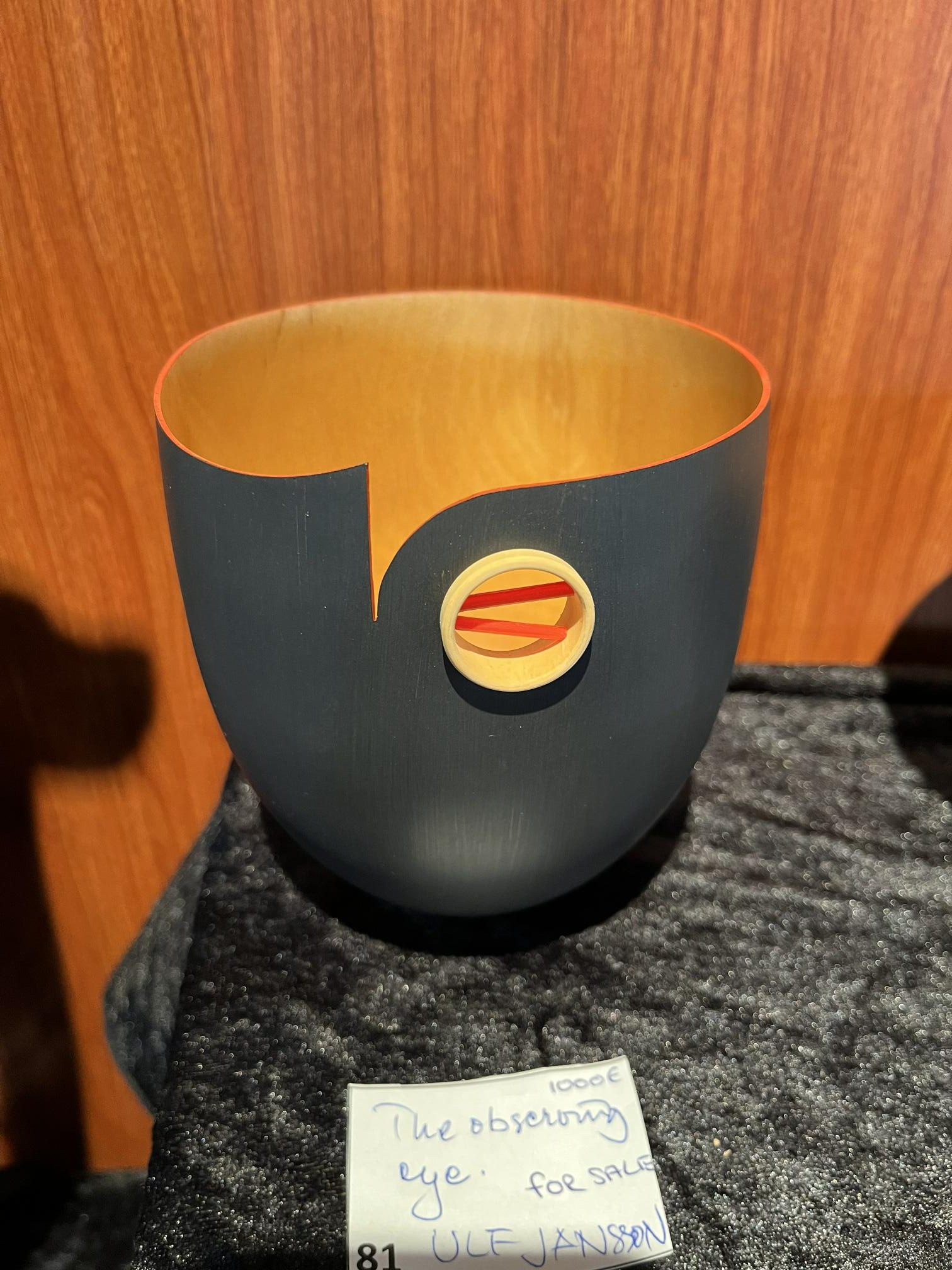

With some days on solid ground now, I’ve had a chance to reflect on this unique-in-the-world experience, and what it might mean to my own humble woodturning hobby.
I can wholeheartedly recommend the experience to anyone of any skill level who has even a smidgen of adventure and curiosity in their blood. I’m told that at the end of every cruise for the last 25 years the director, Mr Odd Erik Thjomoe, swears he’ll never run one again. But then he does. At only once every 3 years, however, I wouldn’t test luck too long.
The accommodations were adequate, not sumptuous; the food was plentiful, delicious, and Norwegian (pickled herring was optional). The additional maker-activities included wood carving, scroll sawing, knife making, wire wrapping, and others. Non woodturning spouses of both genders seemed happily engaged. Excursions on land were many, varied, and optional. I went to see the largest model railroad setup in northern Europe, some glass blowing, and got a look at the blustery North Cape, the northernmost tip of Europe. Other days I took a quick walk around town and returned to ship activities.
One night we were spellbound by a lecture by Dr Nalini Nadkarni, University of Utah Professor Emerita of Biological Sciences. Her life’s work has focused on tropical rain forest canopies, their value and sustainability. Her connection to wood turning is compelling, and a small group of us have begun enthusiastic exploration of possible ties with AAW.
On the last night we enjoyed a spirited auction that raised US$12,000 for a pediatric cancer research organization in Norway. When we finally docked again in Stavanger, giant cranes unfolded, trucks rolled up, and the massive job of unloading lathes, tools, supplies, equipment and crew commenced. We 200 passengers simply pocketed our souvenir key cards, boarded buses, and left it all behind.
Any questions I’m happy to answer, and appreciate your keeping my ruminations confined to our membership and not wider social media distribution. My overriding impression from all I learned and saw is that everyone, regardless of skill or experience, is still practicing, still making mistakes, still occasionally pushing through frustration, still asking questions, still sharing, still experimenting… still practicing. Never give up!
Happy summer,
Marianne Patton
Chelan